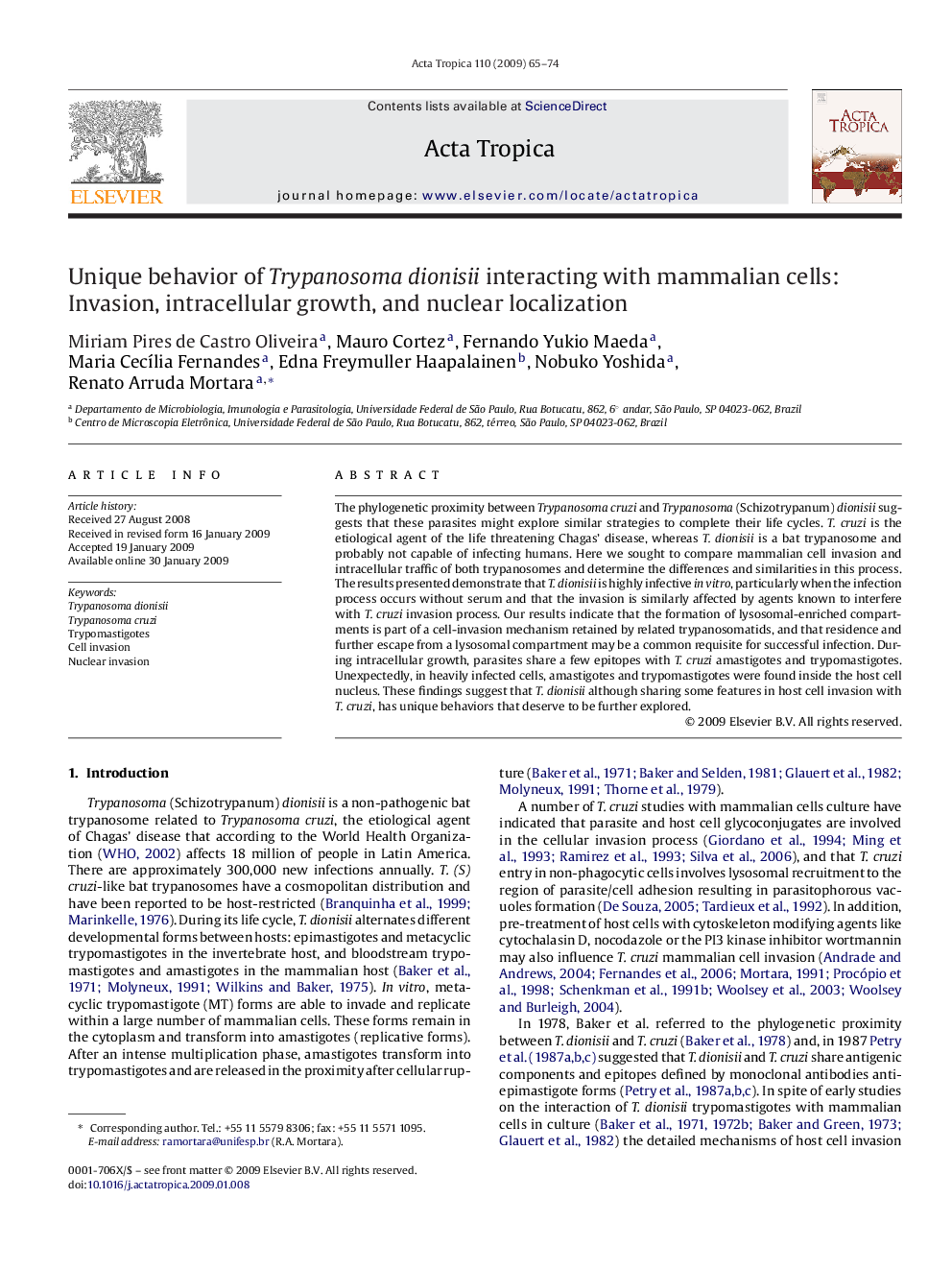| Article ID | Journal | Published Year | Pages | File Type |
|---|---|---|---|---|
| 3394334 | Acta Tropica | 2009 | 10 Pages |
The phylogenetic proximity between Trypanosoma cruzi and Trypanosoma (Schizotrypanum) dionisii suggests that these parasites might explore similar strategies to complete their life cycles. T. cruzi is the etiological agent of the life threatening Chagas’ disease, whereas T. dionisii is a bat trypanosome and probably not capable of infecting humans. Here we sought to compare mammalian cell invasion and intracellular traffic of both trypanosomes and determine the differences and similarities in this process. The results presented demonstrate that T. dionisii is highly infective in vitro, particularly when the infection process occurs without serum and that the invasion is similarly affected by agents known to interfere with T. cruzi invasion process. Our results indicate that the formation of lysosomal-enriched compartments is part of a cell-invasion mechanism retained by related trypanosomatids, and that residence and further escape from a lysosomal compartment may be a common requisite for successful infection. During intracellular growth, parasites share a few epitopes with T. cruzi amastigotes and trypomastigotes. Unexpectedly, in heavily infected cells, amastigotes and trypomastigotes were found inside the host cell nucleus. These findings suggest that T. dionisii although sharing some features in host cell invasion with T. cruzi, has unique behaviors that deserve to be further explored.
